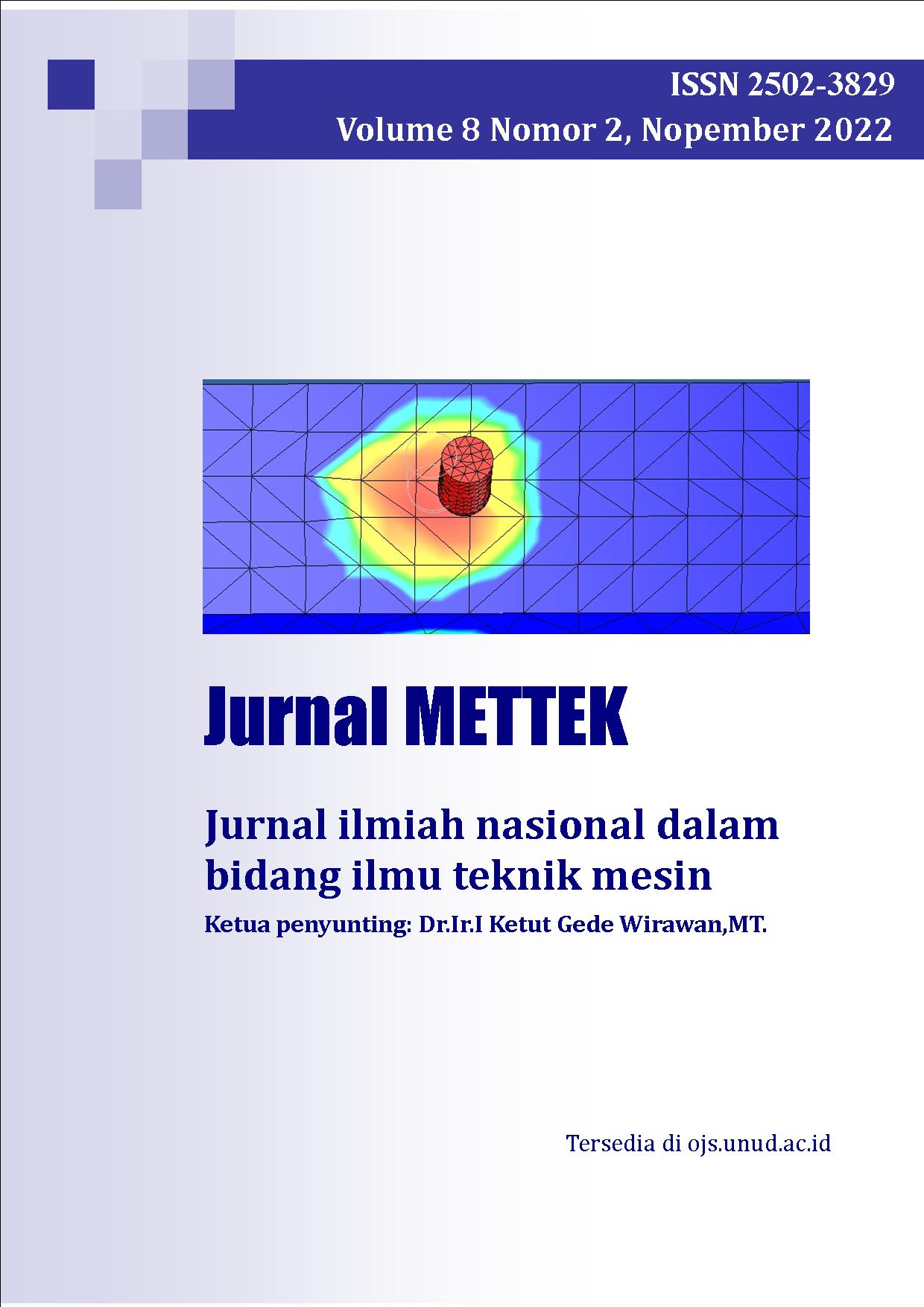Effect of Thiosulfate Concentration and Leaching Temperature in Ammoniacal Thiosulfate Leaching of Refractory Sulfide Gold Ore
Abstract
Tiosulfat sebagai larutan pelindian emas pertama kali dipelajari pada tahun 1979 untuk menemukan alternatif larutan sianida dan merkuri yang banyak digunakan dalam industri ekstraksi emas meskipun berdampak negatif bagi lingkungan. Sampel bijih yang digunakan adalah bijih asli dari Bolaang Mongondow, Sulawesi Utara. Berdasarkan pengamatan Mikroskop Optik dan karakterisasi LIBS, terdapat senyawa pirit yang merupakan salah satu karakteristik bijih sulfida. Menurut fluoresensi sinar-X dan Inductively Coupled Plasma, bijih mengandung sekitar 14,62% ??Fe, 6,69% ??S, 0,15% Cu, dan 0,27 ppm Au. Penelitian ini bertujuan untuk mengetahui pengaruh konsentrasi tiosulfat dan temperatur pelindian pada pelindian tiosulfat amoniak bijih emas sulfida refraktori terhadap kelarutan emas. Penelitian ini dilakukan dengan metode leaching skala laboratorium. Hasil leaching kemudian diperiksa dengan Inductively Coupled Plasma (ICP). Konsentrasi tiosulfat (0,05M, 0,1M, dan 0,2M) dan pengaruh temperatur (25?C, 40?C, 60?C) dipelajari. Ekstraksi emas maksimum (62%) diperoleh dengan menggunakan konsentrasi tiosulfat 0,1M pada 40?C selama 2 jam dengan kepadatan pulp 20%. Kecepatan pengadukan dan pH larutan berair masing-masing adalah 400 rpm dan 10. Berdasarkan hasil tersebut dapat disimpulkan bahwa konsentrasi larutan tiosulfat dan temperatur pelindian akan mempengaruhi kelarutan emas.
Thiosulfate as gold leach solution first studied in 1979 to found alternative of cyanide and mercury solution which are widely used in gold extraction industry although it’s negative impact for the environment. The ore sample is native ore from Bolaang Mongondow, North Sulawesi. According to Optical Microscope observation and LIBS characterization, there are pyrite compound which is one of the chacaracteristic of sulfide ore. According to X-ray fluorescence and Inductively Coupled Plasma, the ore contained about 14.62% Fe, 6.69% S, 0.15% Cu, and 0.27 ppm Au. This study aimed to determine the effect of thiosulfate concentration and leaching temperature in ammoniacal thiosulfate leaching of refractory gold sulfide ores on the solubility of gold. This research was conducted by laboratory scale of leaching method. The leaching result is then checked by Inductively Coupled Plasma (ICP). The concentration of thiosulfate (0.05M, 0.1M, and 0.2M) and the effect of temperature (250 C, 400 C, 600 C) were studied. Maximum gold extraction (62%) was obtained using 0.1M of thiosulfate concentrations at 400 C for 2 h with 20% of pulp density. Stirring speed and the pH of the aqueous solution were 400 rpm and 10, respectively. According to the results, it can be concluded that the concentration of Thiosulfate solution and leaching temperature will affect the dissolution of gold.
Downloads

This work is licensed under a Creative Commons Attribution-NonCommercial-ShareAlike 4.0 International License.

This work is licensed under a Creative Commons Attribution-NonCommercial-ShareAlike 4.0 International License.







